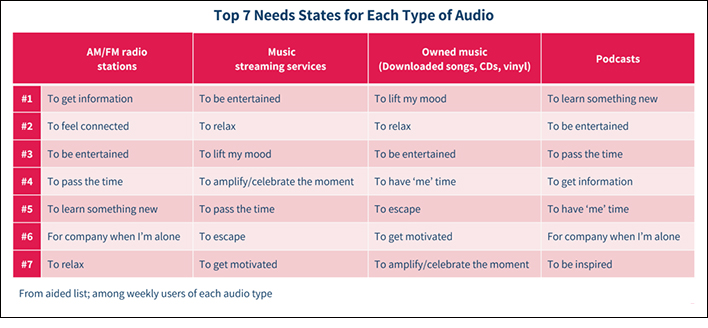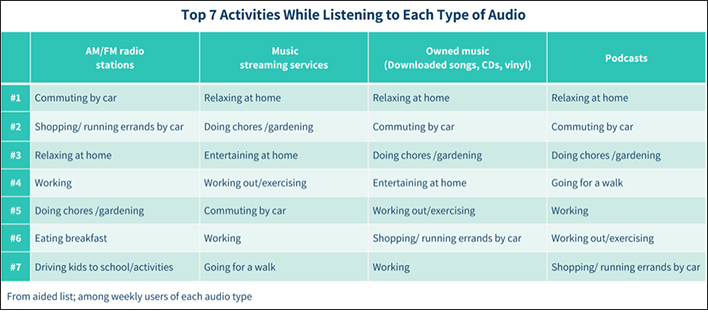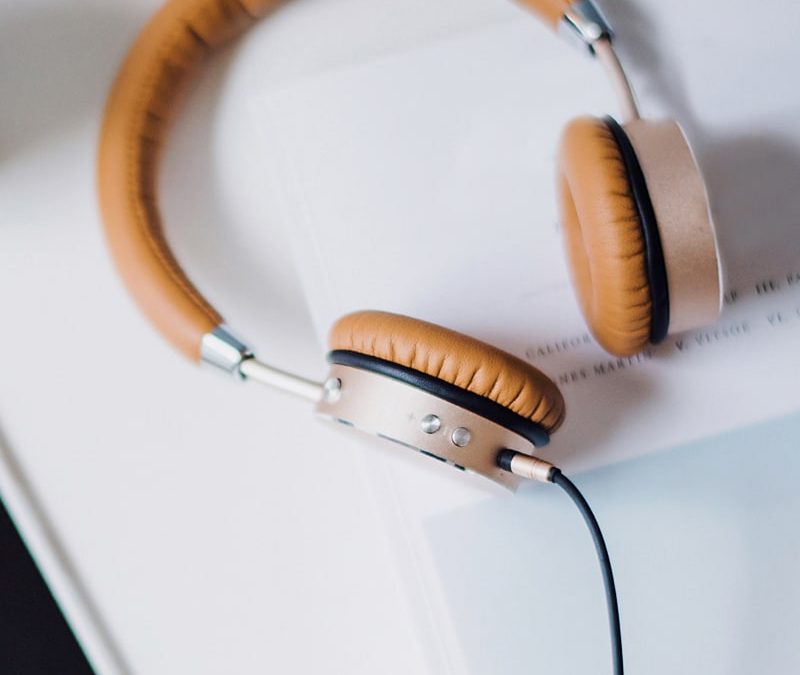Of the 5 senses most of us are born with, some have different filtering properties.
Those 5 human senses are
- Taste
- Touch
- Sight
- Hearing
- Smell
Some of these might diminish as we get older, the most common ones are sight and hearing. Others vary depending on the individual as my wife’s sense of smell is much stronger than mine.
In the media and marketing world that I work with it’s usually the sense of sight and hearing that are most important. And there is one huge difference.
We can close our eyes and stop the visual messaging, but our ears are always listening. Even when we are dead asleep, we can be woken by an unexpected sound, right?
A recent report offers insights on different audio and why people listen to them.
Traditional AM/FM Radio, Owned Music such as CDs, Vinyl Albums, Downloaded MP3s , Music Streaming Services and Podcasts were all examined.
In my role as the General Sales Manager of WOWO radio, a news/talk station that’s nearly 100 years old, I always find these independent studies interesting and they often confirm what I already know.
There has always been an interesting relationship between music radio stations and “record companies”. When I worked for music stations we relied on the records/cds/mp3s for our programming. The record companies relied on the music radio stations to play and promote their recordings because it led to sales of their product.
There has always been a segment of the population that would find ways to get their music without either paying for it, or avoid commercials and the reality is that Never Radio group is actually a tiny percentage of the population. Most of us are consumers of multiple sources of audio.
Let’s dig in to the research.

AM/FM Radio stands alone as the audio most widely used to ‘get information’ and ‘feel connected. Podcast listeners most commonly listen to satisfy their curiosity: they listen ‘to learn something new’ but also ‘to be entertained’ and podcasts are the only audio type where many also listen ‘to be inspired.’
WOWO radio accomplishes this with our news talk format and our Federated Media Podcast network includes both archived highlights and interviews along with original content. On a personal or side note, the growing popularity of podcasts fits in with the current trend to On Demand entertainment that so many of us have been doing with TV viewing.

The top seven activities taking place while listening to AM/FM radio are: commuting by car, shopping/running errands by car, relaxing at home, working, doing chores/gardening, eating breakfast and driving kids to school/activities.
Traditional thinking has been that the most listened to times for radio stations is “drive times” because people are listening as they drive back and forth to work. Looking at the rating data I have for WOWO radio however, our listenership remains strong all day long.
AM/FM radio again carves out a distinct profile, most frequently riding shotgun as listeners commute, shop or run errands in their cars. Listeners to the other types of audio are more homebound, being most likely to listen while ‘relaxing at home.’ Many listeners to podcasts and owned music also listen in the car, unlike music streamers where data charges likely get in the way. AM/FM Radio serves a particularly distinct set of needs and use cases, reaching listeners when they are seeking information and connection and when they are out and about.
Also unique to the talk radio format is what I call “appointment listening”. Some of the most loyal talk radio listeners tune in daily to hear what their favorite talk show host has to share on WOWO. Music radio listeners are less likely to do this and may tune out if the station plays a song they don’t like or too many commercials in a row.
Want to know more about how to invite our listeners to become your customers? Contact me, Scott Howard with an email. Scott@WOWO.com is my email. I also have sponsorship opportunities for our podcasts along with on the radio, and if you’ve ever considered doing your own podcast, we have the tools and technology for that too.

